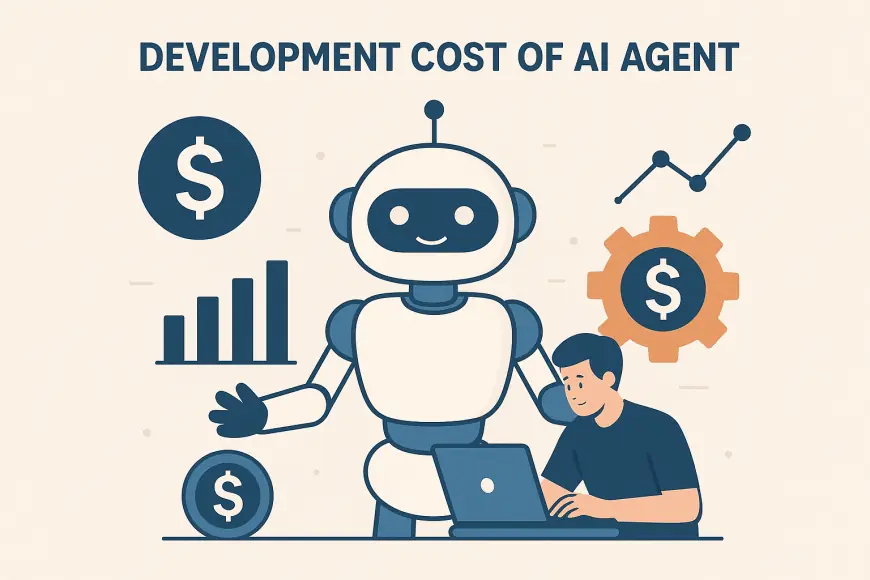Cloud vs On-Premise Solutions: Impact on Development Cost of AI Agent
Discover how cloud vs on-premise solutions influence the development cost of AI agent projects.
Cloud vs On-Premise Solutions: Impact on Development Cost of AI Agent
In today’s rapidly evolving technological landscape, businesses are increasingly adopting AI Agent development to enhance operations, deliver personalized experiences, and automate complex tasks. From AI chatbot development to advanced AI agent development for enterprise solutions, intelligent agents are transforming industries such as healthcare, finance, real estate, and retail. However, one of the most critical considerations when implementing an AI Agent is its development cost. Among the various factors influencing this cost, the choice between cloud-based and on-premise solutions plays a pivotal role.
Understanding how deployment models affect the development cost of AI Agent is essential for businesses planning long-term AI strategies. Both cloud and on-premise solutions have unique advantages and challenges, and their selection impacts initial investment, scalability, maintenance, and overall efficiency. In this blog, we will explore the differences between cloud and on-premise AI Agent solutions, how they influence costs, and what businesses need to consider when choosing the right approach for AI development, app development, web development, and custom software development projects.
Understanding Cloud and On-Premise AI Solutions
Cloud-based AI Agent development involves leveraging remote servers hosted by third-party providers to build, train, and deploy AI models. These solutions offer flexible infrastructure, easy scalability, and access to advanced AI tools without the need for extensive internal resources. Businesses can focus on building functional AI Agents without investing heavily in physical infrastructure or ongoing maintenance.
On the other hand, on-premise solutions involve deploying AI agent development entirely within the organization’s internal servers and networks. While this approach provides complete control over data, infrastructure, and security, it requires significant upfront investment in hardware, software licenses, and skilled personnel to manage and maintain the systems.
The choice between cloud and on-premise deployment significantly impacts the development cost of AI Agent, making it critical to assess organizational needs, budget, and long-term goals before committing to either approach.
Cost Implications of Cloud-Based AI Agent Development
Cloud solutions are often associated with lower upfront costs, as businesses do not need to invest in expensive servers, networking equipment, or specialized AI infrastructure. For startups and medium-sized businesses, this can be an attractive way to deploy an AI Agent without straining capital resources.
With cloud-based AI development, companies pay for services on a subscription or usage-based model. This includes access to cloud computing resources, storage, and AI frameworks. Additionally, cloud platforms often provide pre-built AI models and integration capabilities for app development, web development, and AI chatbot development, which further reduces development time and costs.
Another benefit of cloud-based solutions is scalability. Businesses can adjust computing resources according to project demands. For instance, during periods of high usage, additional resources can be temporarily allocated, allowing AI agent development teams to handle larger workloads without permanent infrastructure investment. This flexibility can reduce the overall development cost of AI Agent over time, especially for organizations experiencing fluctuating demands.
However, recurring subscription fees and dependency on external vendors for uptime and data security can add operational costs. While the initial development may be cost-efficient, businesses must consider long-term expenditures when calculating total cost of ownership for cloud-based AI Agents.
Cost Implications of On-Premise AI Agent Development
On-premise AI agent development requires businesses to build and maintain their own infrastructure. This includes servers, storage systems, networking hardware, and software licenses for AI development tools. Additionally, hiring and retaining skilled AI professionals to manage infrastructure, train models, and integrate custom software development solutions adds to the development cost of AI Agent.
One of the main advantages of on-premise deployment is data control. Organizations can implement stringent security measures, comply with regulatory requirements, and maintain full ownership of sensitive data, which is critical for sectors like finance, healthcare, and government. This high level of control comes at a premium, however, making the initial investment much higher compared to cloud solutions.
On-premise solutions also require ongoing maintenance and upgrades. Hardware may need replacement, software licenses may require renewal, and AI models must be retrained to maintain performance. For large-scale AI agent development, these cumulative costs can make the development cost of AI Agent substantially higher over time compared to cloud deployment.
Scalability and Flexibility Considerations
One of the key differences between cloud and on-premise solutions is scalability. Cloud-based AI development allows businesses to quickly scale up or down based on computational needs without additional capital expenditure. This is particularly useful for organizations that frequently deploy AI chatbot development projects or launch multiple app development initiatives simultaneously.
On the other hand, scaling on-premise solutions requires purchasing additional servers, expanding storage, and sometimes hiring more personnel to manage the infrastructure. While this approach provides long-term control and can be optimized for very high-demand operations, it increases both the upfront and operational development cost of AI Agent.
Security and Compliance Considerations
Data security and regulatory compliance are crucial factors that impact the development cost of AI Agent. Cloud providers generally offer robust security measures, including encryption, access controls, and compliance with international standards. However, businesses may still need to implement additional layers of security for sensitive data, which can increase costs.
On-premise AI agent development offers maximum control over data security and privacy, which is especially important for industries with strict regulatory requirements. However, this control comes with higher costs for implementing security protocols, maintaining compliance, and continuously monitoring for threats. Businesses must weigh the cost of achieving compliance in-house against the flexibility and cost-efficiency of cloud solutions.
Impact on AI Development Lifecycle
The choice between cloud and on-premise solutions also influences the AI development lifecycle. Cloud platforms often provide pre-built models, automated training pipelines, and integration tools that accelerate AI agent development. This reduces both development time and costs for projects involving web development, app development, and AI chatbot development.
In contrast, on-premise solutions require in-house teams to handle all aspects of development manually, from data preprocessing to model training and deployment. While this allows for highly customized AI agent development, it significantly increases the development cost of AI Agent, as organizations must invest in skilled personnel, hardware, and software.
Industry Applications and Cost Strategies
Different industries may favor cloud or on-premise solutions depending on their requirements. For example, startups and medium-sized businesses often opt for cloud-based AI development to reduce costs and improve time-to-market. Large enterprises in finance, healthcare, or government sectors may invest in on-premise AI agent development to ensure full control and regulatory compliance.
In custom software development and AI chatbot development, cloud solutions allow businesses to quickly deploy scalable solutions, while on-premise AI Agents may be preferred for sensitive applications requiring complete data sovereignty. Understanding these nuances is critical to optimizing the development cost of AI Agent while achieving desired outcomes.
Total Cost of Ownership Considerations
When evaluating development cost of AI Agent, it is important to consider total cost of ownership (TCO). Cloud solutions may have lower initial costs but recurring subscription fees over the long term. On-premise solutions have higher upfront costs but may result in predictable long-term expenses if managed efficiently.
Additionally, businesses must account for indirect costs such as downtime, infrastructure maintenance, training personnel, and model retraining. Organizations that factor in these elements can make a more informed choice between cloud and on-premise AI agent development, optimizing both performance and cost-efficiency.
Conclusion
The choice between cloud and on-premise solutions has a profound impact on the development cost of AI Agent. Cloud-based AI development offers flexibility, lower initial investment, and scalability, making it ideal for startups and medium-sized businesses. On-premise AI agent development provides complete control, data security, and customization, which is often necessary for large enterprises with strict regulatory requirements.
By understanding how deployment models influence costs, businesses can make informed decisions for their AI agent development projects. Integrating cloud or on-premise AI development with app development, web development, custom software development, and AI chatbot development initiatives ensures that intelligent agents deliver maximum value while optimizing the development cost of AI Agent.
As 2025 unfolds, businesses that strategically choose the right deployment model will be better positioned to leverage AI Agents for automation, personalized services, and competitive advantage. Ultimately, the right decision depends on balancing control, flexibility, security, and cost-efficiency to achieve long-term success in the AI-driven business landscape.

What's Your Reaction?
 Like
0
Like
0
 Dislike
0
Dislike
0
 Love
0
Love
0
 Funny
0
Funny
0
 Angry
0
Angry
0
 Sad
0
Sad
0
 Wow
0
Wow
0

















































